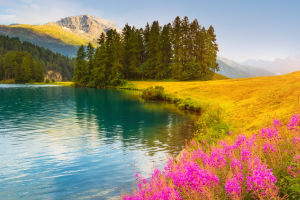Grasslands are the largest terrestrial ecosystems in the world and play an important role in providing ecosystem services.
Grassland resource management can be divided into two levels: institutional protection, which provides a legal basis for resource management, and scientific management, which is based on the natural attributes of grassland resources in different distribution areas to improve grass production and support the sustainable development of livestock farming.
The United States and Australia have large land areas, rich natural grassland resources, and attach importance to grassland management. They invest more in grassland management, use natural grasslands as livestock production bases, develop artificial grasslands, and have high levels of grassland productivity.
The Eurasian grasslands extend from the lower Danube River in Europe to the east in a continuous belt, through the plains of Eastern Europe, the plains of Western Siberia, the Kazakh hills, the Mongolian plateau, to the Songliao Plain in northeast China, stretching nearly 110 longitudes from east to west.
This makes it the widest grassland area on earth, with a length of about 8,000 kilometers and an area of about 8 million square kilometers.
According to the differences in the geographical composition and ecological environment of the region, the Eurasian steppe can be divided into three sub-regions: the Black Sea-Kazakhstan sub-region, the Central Asia sub-region, and the Qinghai-Tibet Plateau sub-region. The fauna of the Eurasian steppe is rich, and dominated by rodents, while the plants are dominated by tufted grasses.
Scholars believe that the forest-steppe zone in the northern part of the Eurasian steppe is not suitable for nomadic pastoralism, while it is the semi-arid desertified steppe zone in the south that eventually shifted from a mixed semi-agricultural and semi-pastoral economy to nomadic pastoralism as the population and herd size expanded and the climatic environment deteriorated.
The settlement type and distribution of the region underwent important changes from around 1400 B.C., and it is likely that the shift to a nomadic economy was completed roughly around 1200 B.C.
There are countless beautiful grasslands, but one of the most representative and well-known ones is the Hulunbuir Grassland. It is located in the northeast of China's Inner Mongolia Autonomous Region, west of the Daxinganling Mountains, and is named after Hulun Lake and Bell Lake.
With a total area of about 100,000 square kilometers, it is a world-famous natural pasture, one of the four largest grasslands in the world, and is known as the best grassland in the world. It is lush and green in spring, with thousands of purple and red flowers. The summer is cool and pleasant, making it a popular summer resort.
In autumn, the ripe wild fruits hang on the branches, and the shepherds are busy grazing and shearing sheep. The whole grassland looks like a beautiful golden painting. In winter, the snow is white, the sky is full of snowflakes, and the moon at night illuminates the whole grassland.
Grasslands and pastures are different types of land, with the main vegetation being herbs and shrubs. Grasslands and pastures are found in all 50 states of the U.S. Privately owned grasslands and pastures account for 27% of the total area of the contiguous 48 states, or 2,137,000 square kilometers.


